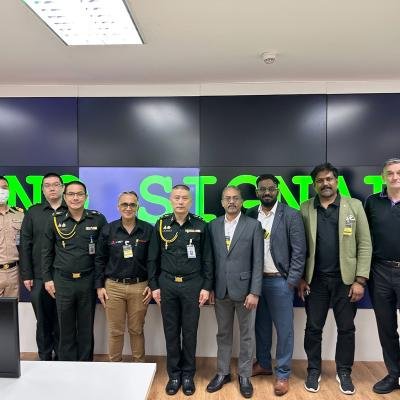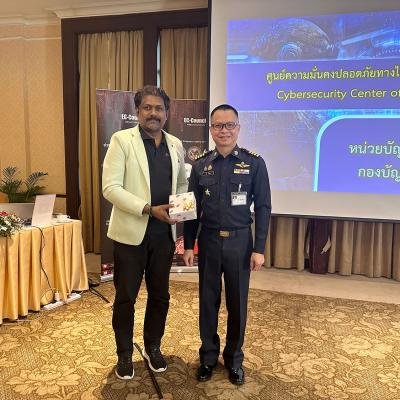In an age of rapid technological evolution, the advent of 5G technology promises unparalleled connectivity and speed. While its potential benefits are vast, a critical examination of the associated security implications is imperative. This comprehensive exploration delves into the multifaceted security challenges posed by 5G networks and elucidates strategies for organizations to bolster their defenses.
The 5G Revolution: A Brief Overview
At the core of the 5G paradigm shift lies an intricate web of enhanced data rates, minimal latency, and expansive device connectivity. Understanding these foundational aspects is pivotal in grasping the security challenges accompanying this revolutionary leap in telecommunications.
Increased Attack Surfaces
One of the most profound shifts introduced by 5G is the exponential increase in connected devices, accompanied by the proliferation of the Internet of Things (IoT). This expansion significantly broadens the attack surface, presenting an array of potential vulnerabilities. This section delves into the risks associated with the sheer volume of connected devices and the nuanced vulnerabilities they introduce to networks.
As 5G facilitates a higher number of interconnected devices, the attack surface widens, providing malicious actors with more entry points. The sheer scale of potential vulnerabilities necessitates a comprehensive security approach that extends beyond traditional network security measures.
Edge Computing and Security Concerns
A distinctive feature of 5G is its reliance on edge computing, which involves processing data at the network's periphery rather than in a centralized data center. While this approach contributes to reduced latency and improved efficiency, it concurrently introduces new security considerations.
Edge computing in a 5G landscape decentralizes computational resources, posing challenges related to data integrity, confidentiality, and availability. This section explores the implications of this decentralization and underscores the need for advanced security measures tailored to the unique characteristics of edge computing in 5G networks.
Massive Data Flow and Privacy Concerns
The accelerated data flow facilitated by 5G technology raises significant privacy concerns. As data traverses the network at unprecedented speeds, the potential for unauthorized access to sensitive information becomes more pronounced. This section examines the challenges associated with safeguarding user data, emphasizing the importance of implementing robust encryption and privacy measures.
The sheer volume and speed of data transmission in 5G networks necessitate robust encryption protocols to ensure the confidentiality of sensitive information. Privacy measures, such as data anonymization and user consent mechanisms, become imperative to mitigate the risks associated with the vast amounts of data circulating within the network.
Supply Chain Risks in 5G Infrastructure
The global nature of 5G infrastructure development introduces a set of supply chain risks. From hardware components to software systems, the interconnected global supply chain becomes a potential vulnerability. This section explores the intricacies of these risks and underscores the importance of a secure supply chain for the integrity of 5G networks.
Global collaboration in 5G infrastructure development necessitates a rigorous approach to supply chain security. Ensuring the integrity of components, scrutinizing suppliers, and implementing stringent supply chain management practices are crucial steps in mitigating the risks associated with a globally distributed supply chain.
Securing 5G Networks: Best Practices
Effectively securing 5G networks demands a multifaceted approach that encompasses technical, organizational, and procedural aspects. This section provides practical insights into best practices for securing 5G networks, including the implementation of robust encryption protocols, regular security audits, user authentication mechanisms, and the integration of artificial intelligence for threat detection and mitigation.
- Implementing Strong Encryption Protocols: Given the high-speed data transmission in 5G networks, robust encryption protocols are essential to ensure the confidentiality of transmitted data. Employing advanced encryption algorithms and regularly updating cryptographic protocols helps mitigate the risk of data interception and unauthorized access.
- Regular Security Audits: Conducting regular security audits is imperative to identify and address vulnerabilities in 5G networks. Proactive assessments of network infrastructure, devices, and applications can uncover potential weaknesses, enabling organizations to implement timely security patches and updates.
- User Authentication Mechanisms: Strengthening user authentication mechanisms is paramount in 5G security. Implementing multi-factor authentication and biometric authentication measures adds an extra layer of defense, mitigating the risk of unauthorized access to sensitive networks and data.
- Role of Artificial Intelligence (AI) in Threat Detection: Leveraging artificial intelligence for threat detection and mitigation is instrumental in the dynamic landscape of 5G security. AI-powered algorithms can analyze vast amounts of data in real-time, identifying anomalous patterns and potential security threats before they escalate.
Collaboration and Information Sharing
Addressing the intricate security challenges of 5G requires collaborative efforts among industry stakeholders. This section underscores the importance of information sharing, collaborative research, and global cooperation in developing effective security measures for 5G networks.
- Information Sharing: Establishing channels for information sharing among industry players, government entities, and cybersecurity experts is critical in enhancing collective cybersecurity resilience. Timely sharing of threat intelligence enables organizations to proactively respond to emerging security risks.
- Collaborative Research: Collaborative research initiatives contribute to the development of advanced security technologies and methodologies tailored to the unique characteristics of 5G networks. Industry-academic partnerships and collaborative research forums foster innovation in the field of 5G cybersecurity.
- Global Cooperation: Given the global nature of 5G deployment, international cooperation is essential. Governments, regulatory bodies, and industry stakeholders must collaborate to establish common standards, regulations, and frameworks that ensure the security and integrity of 5G networks on a global scale.
Conclusion:
In the ever-evolving landscape of digital connectivity, the advent of 5G technology heralds a new era of possibilities. Our exploration into the security implications of 5G within the context of digiALERT underscores the critical need for a proactive and comprehensive approach to safeguarding the digital future.
As we navigate the intricate web of enhanced data rates, low latency, and expansive device connectivity that defines 5G, it becomes evident that the benefits are accompanied by a spectrum of security challenges. The expanded attack surfaces, the nuanced considerations of edge computing, the imperative to protect massive data flows and address privacy concerns, and the complex landscape of supply chain risks all demand meticulous attention.
Our commitment to securing 5G networks at digiALERT involves embracing best practices. Robust encryption protocols, regular security audits, advanced user authentication mechanisms, and the integration of artificial intelligence for threat detection are pivotal components of our strategy. These measures are not merely safeguards; they are the keystones of resilience in the face of an ever-evolving threat landscape.
Collaboration emerges as a central theme. The collective efforts of industry stakeholders, governments, and cybersecurity experts in information sharing, collaborative research, and global cooperation are indispensable. Together, we can establish common standards and frameworks that transcend borders, ensuring the security and integrity of 5G networks worldwide.
At digiALERT, our commitment to innovation and collaboration propels us forward. We recognize that securing the potential of 5G is not a solitary endeavor but a collective responsibility. As we unravel the security implications of 5G, we fortify our foundation, preparing for a digital future that is not only connected but resilient, secure, and poised for sustained growth. The journey ahead may be intricate, but with vigilance, collaboration, and a commitment to excellence, we at digiALERT stand ready to navigate this future, ensuring that the promise of 5G is realized securely and responsibly.







